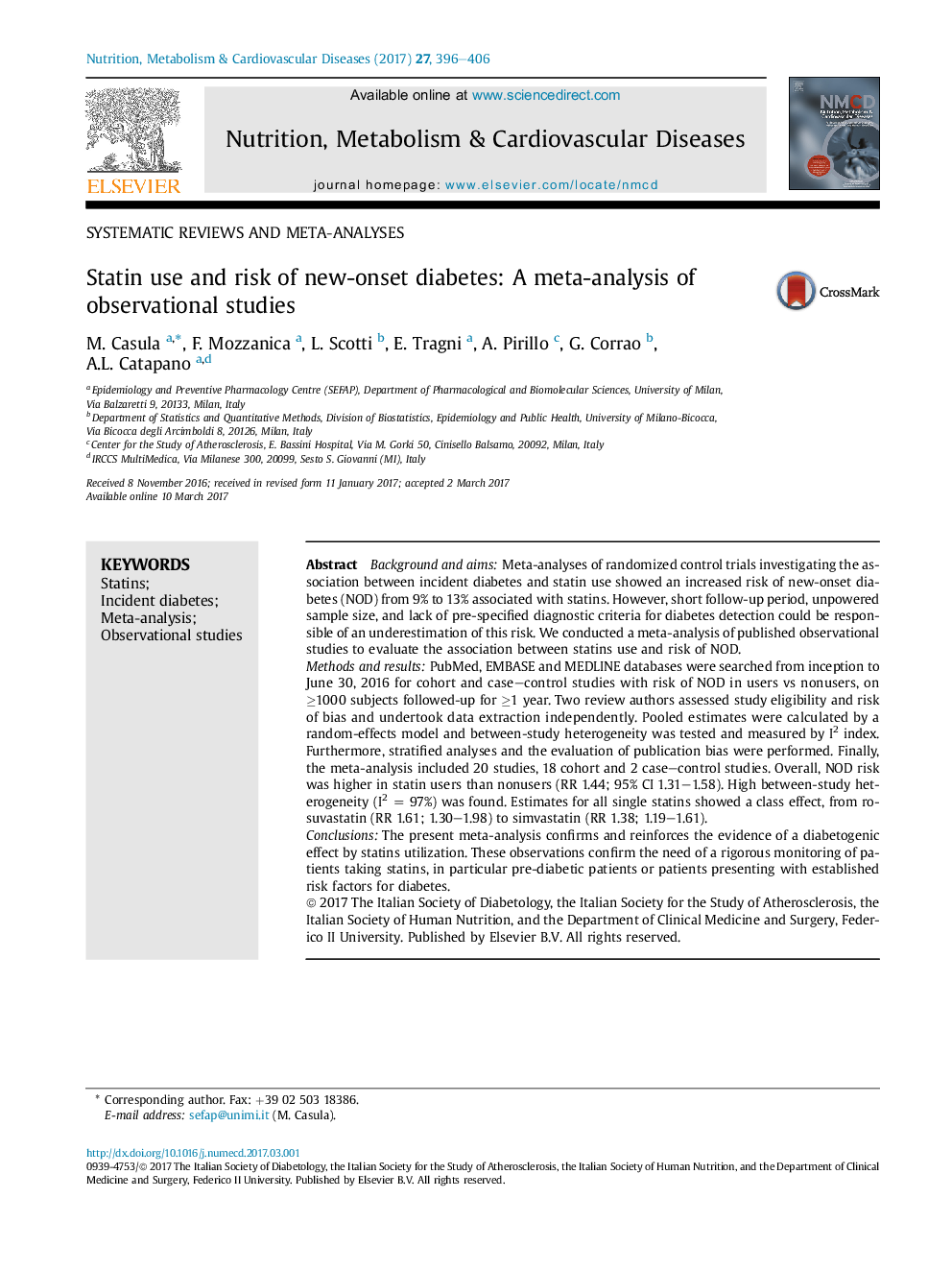| Article ID | Journal | Published Year | Pages | File Type |
|---|---|---|---|---|
| 5619041 | Nutrition, Metabolism and Cardiovascular Diseases | 2017 | 11 Pages |
â¢Trial meta-analyses showed an increased risk of statin-associated diabetes of 9-13%.â¢Our meta-analysis of observational studies showed an increased risk of 44%.â¢Our results confirm the need of a rigorous monitoring of patients taking statins.
Background and aimsMeta-analyses of randomized control trials investigating the association between incident diabetes and statin use showed an increased risk of new-onset diabetes (NOD) from 9% to 13% associated with statins. However, short follow-up period, unpowered sample size, and lack of pre-specified diagnostic criteria for diabetes detection could be responsible of an underestimation of this risk. We conducted a meta-analysis of published observational studies to evaluate the association between statins use and risk of NOD.Methods and resultsPubMed, EMBASE and MEDLINE databases were searched from inception to June 30, 2016 for cohort and case-control studies with risk of NOD in users vs nonusers, on â¥1000 subjects followed-up for â¥1 year. Two review authors assessed study eligibility and risk of bias and undertook data extraction independently. Pooled estimates were calculated by a random-effects model and between-study heterogeneity was tested and measured by I2 index. Furthermore, stratified analyses and the evaluation of publication bias were performed. Finally, the meta-analysis included 20 studies, 18 cohort and 2 case-control studies. Overall, NOD risk was higher in statin users than nonusers (RR 1.44; 95% CI 1.31-1.58). High between-study heterogeneity (I2 = 97%) was found. Estimates for all single statins showed a class effect, from rosuvastatin (RR 1.61; 1.30-1.98) to simvastatin (RR 1.38; 1.19-1.61).ConclusionsThe present meta-analysis confirms and reinforces the evidence of a diabetogenic effect by statins utilization. These observations confirm the need of a rigorous monitoring of patients taking statins, in particular pre-diabetic patients or patients presenting with established risk factors for diabetes.
